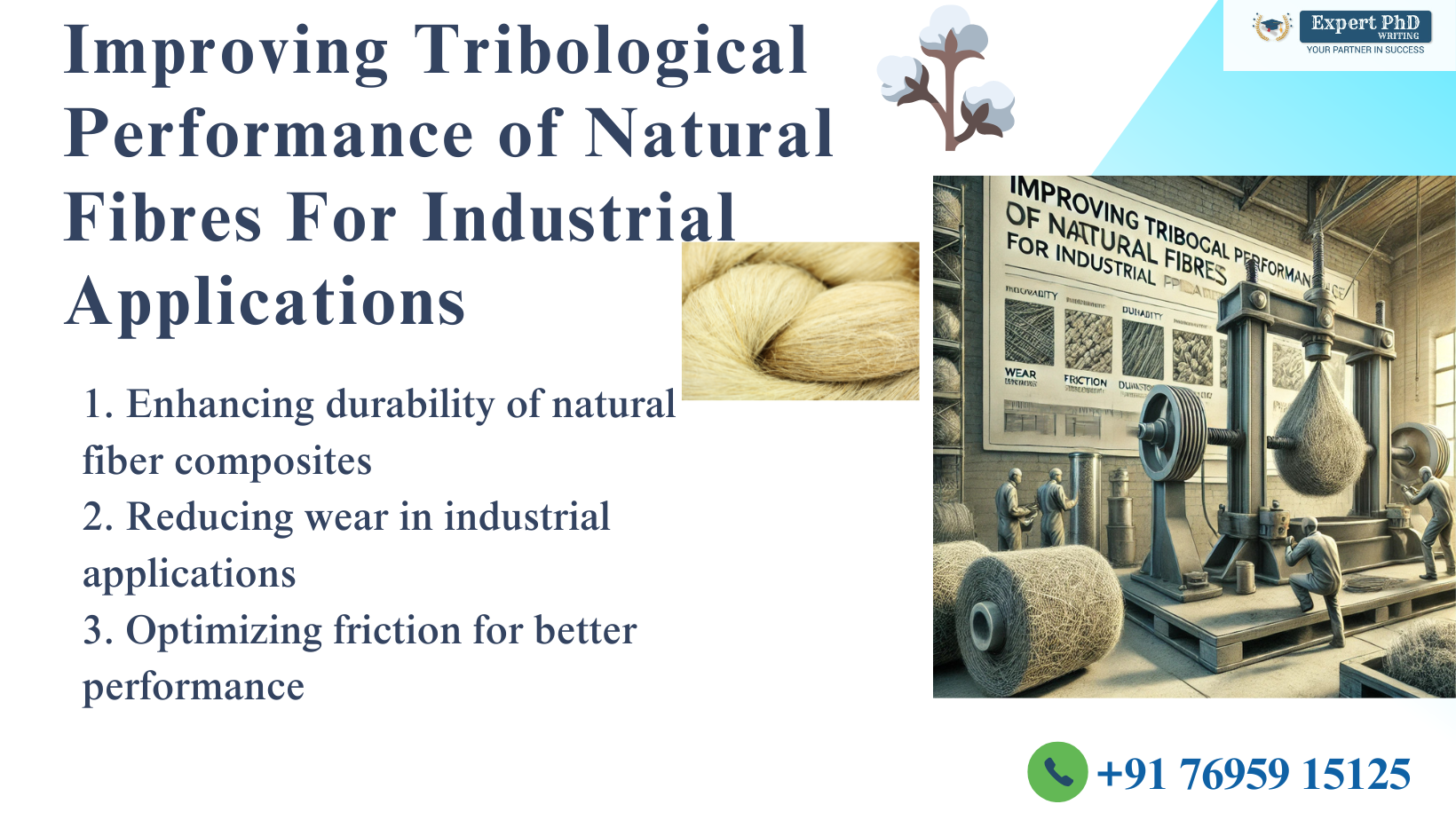

Natural fibres are increasingly used in industrial applications owing to their renewable sources, eco-friendly characteristics, and lower production costs. However, there are different kinds of natural fibres used across industries, such as hemp, jute, sisal, and flax. The transformation towards material sustainability has become highlighted in industries when they looking out for alternative solutions for synthetic fibres (Das & Chaudhary, 2021). For researchers exploring innovations in this area, expert PhD thesis writing on natural fibre composites can provide structured academic guidance. However, certain limitations have been faced by natural fibres in terms of tribological properties, such as mechanical durability, frictional stability, and wear resistance (Mishra et al., 2022). These properties make them to challenge in implementation across complex industrial environments like aerospace, construction, and automotive sectors. It is critical to improve tribological properties of natural fibres to expand their role for industrial use. However, this blog discusses the tribological performance of natural fibres, their challenges, and emerging approaches to address the limitations.
The durability and performance of materials are directly influenced by tribological properties, including lubrication, wear, and friction between interacting surfaces. Natural fibres contain lignin, hemicellulose, and cellulose materials, making them vulnerable to degradation, wear, and moisture absorption under stress. For researchers addressing these challenges, expert guidance on the Methodology chapter for tribology and materials research can be crucial to ensure scientific rigor. Although natural fibres offer eco-friendly benefits, they must compete with synthetic fibres in critical applications where durability and wear resistance are essential (Karimah et al., 2021). The tribological performance of natural fibres is limited in terms of resilience and quality under mechanical stress.

The integration of natural fibres into industrial applications is a complex process due to their unpredictable tribological properties, leading to inconsistent quality. This inconsistency arises from variations in growth conditions, plant species, and processing techniques. The hydrophilic nature of natural fibres makes them susceptible to moisture sensitivity, which can increase friction, cause swelling, and lead to degradation over time. Additionally, their lack of thermal stability restricts their use in high-temperature industrial environments. For accurate performance predictions, many researchers now rely on MATLAB simulations for material behavior analysis to model fibre interactions and stress responses. Furthermore, natural fibres are limited in composite materials due to the lack of adhesion with polymer matrices, which leads to the higher friction and poor resistance (Musthaq et al., 2023). Overcoming these limitations is key to making natural fibres viable in applications that require high durability.
Efforts to improve the tribological properties of natural fibres have focused on surface treatments, chemical modifications, and hybrid composites to make them suitable for demanding industrial applications. Surface treatments, such as silane and alkali applications, modify natural fibre surfaces to reduce moisture absorption and enhance fibre-matrix adhesion. These treatments can reduce surface roughness and hydrophilicity, thereby increasing wear resistance and ensuring better compatibility with polymers for improved durability (Sahu & Gupta, 2020).
Chemical modifications offer another approach, reducing natural fibres' susceptibility to moisture and enhancing their thermal stability. Methods like acetylation and benzoylation alter the fibres' structure, making them less hydrophilic and enhancing dimensional stability. For researchers documenting these advancements, professional Mechanical and material science article writing support can help present findings with clarity and precision. This modification enables natural fibres to perform consistently across different environmental conditions, providing improved durability essential for industrial settings (Samanth & Bhat, 2023).
Hybrid composites represent a promising solution for balancing the durability of synthetic fibres with the sustainability of natural ones. By combining natural and synthetic or mineral fibres, manufacturers can create materials with enhanced mechanical and tribological properties. Hybrid composites, strengthened by both fibre types, can withstand high-stress environments, such as automotive interiors or aerospace applications, where both strength and sustainability are critical.
The addition of nanomaterials, such as nano-silica or carbon nanotubes, is an emerging method to enhance natural fibre performance further. These reinforcements improve the hardness, wear resistance, and frictional properties of natural fibres, making them suitable for more demanding applications. However, uniform nanomaterial distribution within the fibre matrix remains a challenge, as does ensuring the economic feasibility and environmental safety of this approach (Hasan et al., 2020).
Despite these advancements, several challenges persist. One significant hurdle is achieving consistent fibre quality due to the inherent variability of natural materials. Unlike synthetic fibres, natural fibres vary in structure, which complicates their standardization. Surface treatments and chemical modifications, while promising, involve additional costs and can make natural fibres less competitive compared to synthetic options, particularly in high-wear applications. Innovations like 3D printing applications in mechanical engineering also offer opportunities for integrating natural fibres into advanced systems, but further research is needed. Nanomaterial reinforcements, although innovative, come with complexities regarding cost and distribution, and environmental and health impacts are still being evaluated. Future improvements will depend on developing cost-effective, environmentally friendly treatment techniques and setting quality standards to help natural fibres gain industrial acceptance (Ismail et al., 2022).

Ultimately, improving the tribological performance of natural fibres is crucial for their expanded industrial use. While these fibres offer environmental benefits, limitations in wear resistance, moisture absorption, and thermal stability persist. However, advancements in surface treatments, chemical modifications, and hybrid composites bring us closer to achieving high-performance, sustainable alternatives to synthetic fibres.